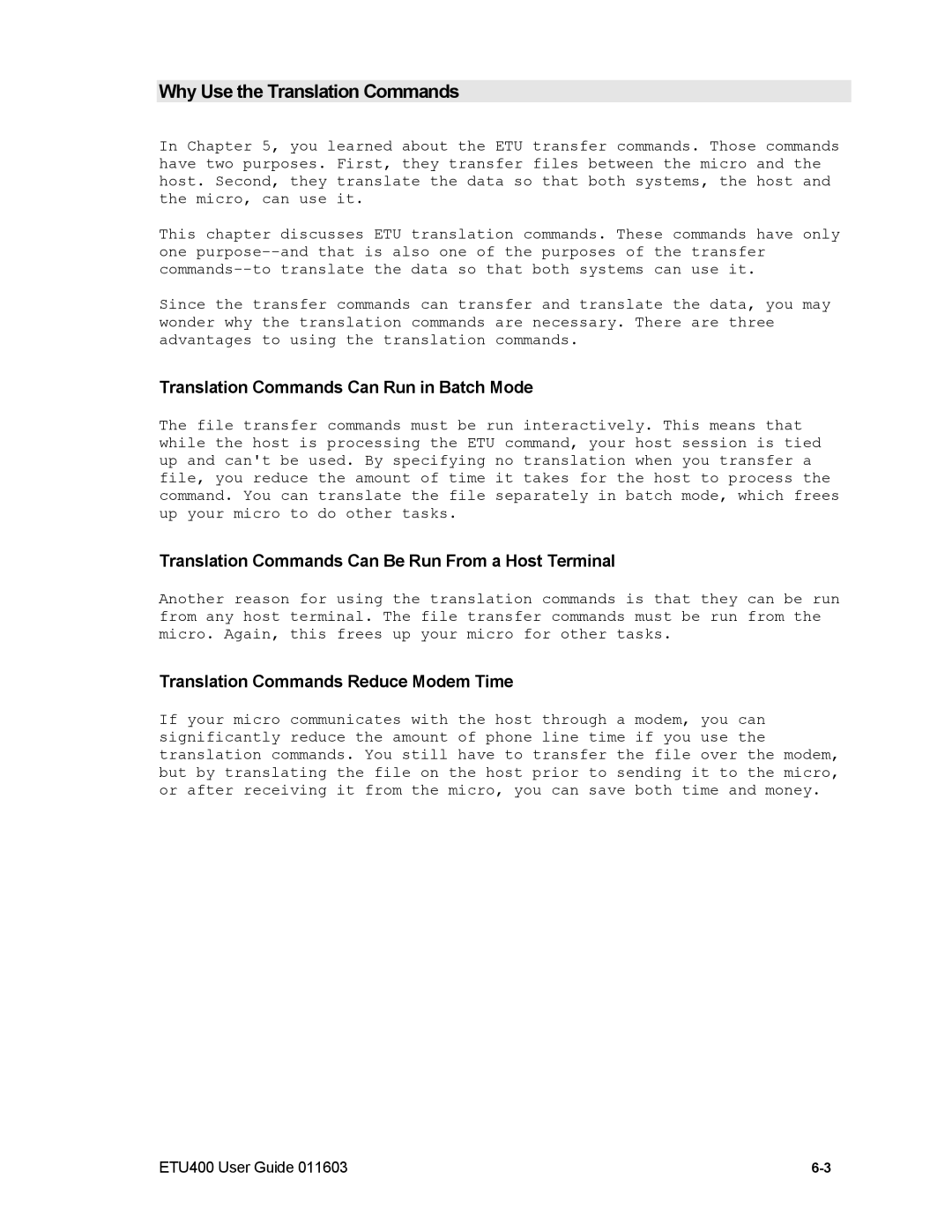Why Use the Translation Commands
In Chapter 5, you learned about the ETU transfer commands. Those commands have two purposes. First, they transfer files between the micro and the host. Second, they translate the data so that both systems, the host and the micro, can use it.
This chapter discusses ETU translation commands. These commands have only one
Since the transfer commands can transfer and translate the data, you may wonder why the translation commands are necessary. There are three advantages to using the translation commands.
Translation Commands Can Run in Batch Mode
The file transfer commands must be run interactively. This means that while the host is processing the ETU command, your host session is tied up and can't be used. By specifying no translation when you transfer a file, you reduce the amount of time it takes for the host to process the command. You can translate the file separately in batch mode, which frees up your micro to do other tasks.
Translation Commands Can Be Run From a Host Terminal
Another reason for using the translation commands is that they can be run from any host terminal. The file transfer commands must be run from the micro. Again, this frees up your micro for other tasks.
Translation Commands Reduce Modem Time
If your micro communicates with the host through a modem, you can significantly reduce the amount of phone line time if you use the translation commands. You still have to transfer the file over the modem, but by translating the file on the host prior to sending it to the micro, or after receiving it from the micro, you can save both time and money.
ETU400 User Guide 011603 |
